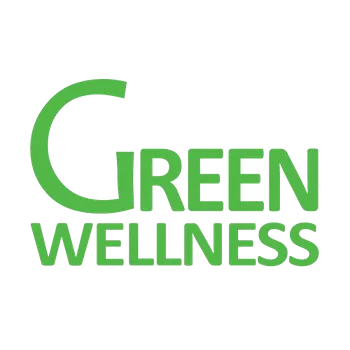
Do you like colors? Do you like your food colourful? No doubt, vibrant colors brighten up your days or even gloomy mood. However, is chemical colors on your food, cosmetics, toiletries and household cleaners necessary? Have you ever wonder what would the colourful artificial dye, food or non-food grade, do to you and your kids?
In a nutshell, artificial coloring is shown to cause hyperactivity which sometimes we just joke about when a kid goes wild and blame it all on sugar rush. But sugar is not all to be blamed.
After reviewing 2,435 unique references and identifying 27 qualified clinical trials spanning across 5 countries on 4 continents, i.e. USA, UK, Australia and Canada in human and animals, California’s Office of Environmental Health Hazards Assessment released their findings in April 2021 that synthetic food dyes are associated with adverse neurobehavioral effects, such as inattentiveness, hyperactivity and restlessness in sensitive children. Symptoms of inattention and disorganization tend to predict problems with academic achievement and peer neglect while hyperactivity and impulsivity are predictive of aggression, peer rejection, and other difficulties.
Below was a video shared by Dr. Rebecca Bevans on "The Effects Of Artificial Food Dyes" on her 7 years old child during an TEDx Talk.
What is artificial food coloring?
No matter how we call it – additives, coloring or dyes – synthetic food colors are pigments on our food that’s not derived from natural sources such as plant or fruits.
What are artificial food colorings made of?
Artificial coloring are traditionally known as coal-tar colors because it was first product from by-products of coal processing back in 1856 when William Henry Perkin discovered the first synthetic organic dye, called mauve.
Today they are synthesized mainly from raw materials obtained from petroleum.
Where are artificial coloring found?
Commonly in food & drinks.
Soft drinks, sports drink, breakfast cereal, jam, sweets and candies, frosting, butter and cheese, even some types of bread and cookies, and quite unbelievably, vitamins and medication intended for children.
According to the Malaysian Food Act 1985, colouring substances are permitted in processed meat, fish paste, belacan, cincalok, fish keropok, pekasam, margarine, Vanaspati, blended cooking oil, dried or dehydrated vegetable, tomato paste, canned vegetable, fermented soya bean product, soup and soup stock, raw or fresh fruit, dried fruit, candied cherries, canned cherries, canned fruit cocktail, fruit puree, fruit paste, jam, fruit jelly, soya sauce or kicap, chili sauce, tomato sauce or ketchup, pickle, fruit syrup, fruit cordial, fruit squash, flavoured syrup, flavoured cordial, flavored drink, fruit juice, soft drink with fruit juice, soft drinks, wine cocktail, vermouth or wine apéritif, liqueur, shandy.
In the USA, a 2014 study have shown that foods consumed by US children contain more food dye than foods consumed by adults. Out of 810 samples in one grocery store collected, 350 products contained synthetic food dyes, amounting to 43.2%. The most common dyes were Red No. 40 (29.8% of products), Blue No. 1 (24.2%), Yellow No. 5 (20.5%), and Yellow No. 6 (19.5%). Produce was the only category that did not have any FD&C synthetic food dyes. Candies (96.3%), fruit-flavored snacks (94%), and drink mixes/powders (89.7%) were the food categories with the highest percentage of products containing synthetic food dyes (Batada and Jacobson 2016).
Is artificial food dye banned anywhere in the world?
In Europe, foods with artificial colors must carry a label warning that “consumption may have an adverse effect on activity and attention in children.” European Parliament also completely banned colors in foods consumed by babies and young children.
However, in the USA, there is no ban on any FDA approved artificial colors although not necessarily agreed by parents at large. The controversial yet popular artificial colors are:
- FD&C Blue No. 1
- FD&C Blue No. 2
- FD&C Green No. 3
- FD&C Red No. 3
- FD&C Red No. 40
- FD&C Yellow No. 5
- FD&C Yellow No. 6.
What to look for on the product label?
Read the ingredients label every time and be alert on ingredients stated with numbers combined! If no information is available or where label is not available, check with the seller or producer.
What should I do?
Firstly, read product label whenever it’s available. Or check with the maker if product label is not available. Parents who wish to limit the amount of color additives in their children’s diet may check the food ingredient list on labels. Parents should also discuss any concerns with their family physician.
Our thoughts in conclusion
Why do we need colored food in the first place? Oh well, consumers like ourselves is to be blamed in a way too. Law of demand and supply. As a consumer, we often judge the freshness and taste of food and drinks by its look. That’s where and why color plays a big role.
But, is food coloring necessary at all really? There’s totally no nutritional values from coloring additives! Probably just icing on the cake, attractive but inessential, yet use of artificial coloring could be harmful to your health. Perhaps its time to make a call and take the most difficult step, change our perception and mindset, one step at a time!
This article was written by Green Wellness Malaysia's Founder and Managing Director, Datin Dorph Peng.
Your thoughts, feedback and comments are most welcome. Please feel free to email blog@greenwellness.my
DISCLAIMER: Content from this article is not a substitute for professional medical and healthcare advice, diagnosis, treatment, dietary, or safety advice, and may not be used for such purposes. Always seek the advice of your doctor, physician or other qualified expert with any questions you may have regarding a medical question, condition, or safety concern. Reliance on information presented on this article is at your own risk.




